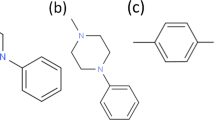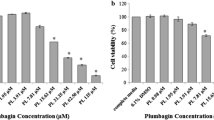Abstract
Purpose. To evaluate intestinal transport, uptake and metabolism characteristics of the bis(pivaloyloxymethyl)-ester [bis(POM)-ester] of the antiviral agent 9-(2-phosphonylmethoxyethyl)adenine [PMEA].
Methods. Intestinal transport, uptake and metabolism of bis(POM)-PMEA were studied using an in vitro cell culture system of the intestinal mucosa (Caco-2 monolayers). Concentrations of bis(POM)-PMEA and its metabolites mono(POM)-PMEA and PMEA were determined using a reversed-phase HPLC method. Enzymatic stability of bis(POM)-PMEA was evaluated by incubation with purified liver carboxylesterase, homogenates of Caco-2 cells and scraped pig small intestinal mucosa.
Results. The use of bis(POM)-PMEA as a prodrug of PMEA resulted in a significant increase in transport of total PMEA [bis(POM)-PMEA, mono(POM)-PMEA and PMEA] across Caco-2 monolayers. While transepithelial transport of PMEA (500 μM) was lower than 0.1% during a 3 hr incubation period, transport of total PMEA after addition of bis(POM)-PMEA (100 μM) amounted to 8.8% over the same incubation period. Only 23% of the amount transported appeared as intact bis-ester at the basolateral side, while 33% of this amount was free PMEA and 44% was mono(POM)-PMEA, suggesting susceptibility of the prodrug to chemical and enzymatic degradation. Uptake studies revealed that only negligible amounts of bis(POM)-PMEA (< 0.2%) were present inside the cells. Very high intracellular concentrations of PMEA were found ≈ 1.2 mM, after a 3 hr incubation with 50 μM bis(POM)-PMEA), which suggests that PMEA was trapped inside the cells probably due to its negative charge. This explains that efflux of PMEA was relatively slow (25% of the intracellular amount in 3 hr). Enzymatic degradation of the prodrug by carboxylesterase was confirmed by incubation of bis(POM)-PMEA with purified enzyme (Km = 87 μM and Vmax = 9.5 μM/min). Incubation of bis(POM)-PMEA (10 μM) with cell homogenate of Caco-2 monolayers and pig small intestinal mucosa produced similar degradation profiles.
Conclusions. The use of the bis(POM)-prodrug significantly enhances the intestinal permeability of PMEA. Intracellular trapping of PMEA in the intestinal mucosa may result in slow release of PMEA to the circulation after oral administration of bis(POM)-PMEA.
Similar content being viewed by others
REFERENCES
L. Naesens, J. Balzarini, and E. De Clercq. Rev. Med. Virol. 4:147–159 (1994).
L. Naesens, J. Balzarini, N. Bischofberger, and E. De Clercq. Antimicrob. Agents Chemother. 40:22–28 (1996).
K. C. Cundy, J. A. Fishback, J.-P. Shaw, M. L. Lee, K. F. Soike, G. C. Visor, and W. A. Lee. Pharm. Res. 11:839–843 (1994).
J. Balzarini, L. Naesens, J. Slachmuylders, H. Niphius, I. Rosenberg, A. Holý, H. Schellenkens, and E. De Clercq. AIDS 5:21–28 (1991).
K. C. Cundy and W. A. Lee. Antimicrob. Agents Chemother. 38:365–368 (1994).
J. E. Starrett, Jr., D. R. Tortolani, J. Russell, M. J. M. Hitchcock, V. Whiterock, J. C. Martin, and M. M. Mansuri. J. Med. Chem. 37:1857–1864 (1994).
J.-P. Shaw and K. C. Cundy. Pharm. Res. 10(Suppl.):S294 (1993).
R. V. Srinivas, B. L. Robbins, M. C. Connelly, Y.-F. Gong, N. Bischofberger, and A. Fridland. Antimicrob. Agents Chemother. 37:2247–2250 (1993).
P. A. Barditch-Crovo, K. C. Cundy, M. Wachsman, J. Toole, H. Burgee, and D. Ebeling, Antiviral Res. 26(3, suppl.): A229, abstract nr. 9 (1995).
I. J. Hildago, T. J. Raub, and R. T. Borchardt. Gastroenterology 96:736–749 (1989).
O. H. Lowry, N. J. Rosebrough, A. L. Farr, and R. J. Randall. J. Biol. Chem. 193:265–275 (1951).
S. Benzaria, H. Pélicano, R. Johnson, G. Maury, J.-L. Imbach, A.-M. Aubertin, G. Obert, G. Gosselin. J. Med. Chem. (accepted for publication).
P. Augustijns, P. Annaert, S. Adriaens, E. De Clercq, and R. Kinget. J. Liq. Chrom. Rel. Technol. 19:2271–2283 (1996).
D. Farquhar, S. Khan, D. N. Srivasta, and P. P. Saunders. J. Med. Chem. 37:3902–3909 (1994).
Author information
Authors and Affiliations
Corresponding author
Rights and permissions
About this article
Cite this article
Annaert, P., Kinget, R., Naesens, L. et al. Transport, Uptake, and Metabolism of the Bis(pivaloyloxymethyl)-Ester Prodrug of 9-(2- Phosphonylmethoxyethyl)Adenine in an In Vitro Cell Culture System of the Intestinal Mucosa (Caco-2). Pharm Res 14, 492–496 (1997). https://doi.org/10.1023/A:1012155717819
Issue Date:
DOI: https://doi.org/10.1023/A:1012155717819




